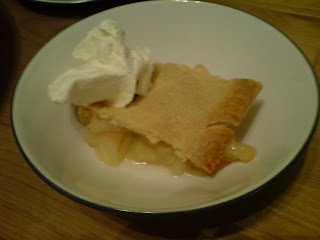What makes these English, I do not know; other than a sort of nod to Maharajah days maybe. Anyways, I bought a huge bag of tiger prawns from
W H Lung, the Oriental Cash and Carry near where I work for when I made Phat Thai for me and Butters at the weekend. I had loads left over, so I looked through the book and saw Spicy Prawns. I had all the ingredients in and it takes very little time to make. If you have spices at home, it’s a good one to do.
BTW: if you don’t, buy some spices in – they’re cheap as long as you don’t buy
Schwartz spices; they are ridiculously overpriced. Go to an Asian supermarket. If you live in Manchester,
Unicorn sells good value, organic spices. Also, buy your spices whole and grind them as you need them – the flavour is much better. Use a pestle and mortar, or as I do, a coffee grinder.
For two:
Peel (if you need to) and devein 8 ounces of raw tiger prawns. To devein, cut down the back of the prawn and remove the black vein running along its length. (FYI: it isn’t a vein, but the digestive tract and the black is the mud and God-knows-what else they’ve scoffed). Make a spice mix of ½ teaspoon of paprika, ½ a teaspoon of ground cumin, a ¼ teaspoon of ground ginger and a pinch of cayenne pepper, plus some salt. Heat a couple of tablespoons of olive oil in a pan and fry two chopped cloves of garlic. When they start to turn golden add the spice mix and fry for a minute. This is very important when cooking any spice – you need to fry them in oil at the start, otherwise they taste bland and raw. Add the prawns and fry for another two minutes, stirring them around so they get evenly cooked. Lastly, throw in a good few tablespoons of coriander leaves and cook for one more minute. Serve immediately.
Grigson says to serve with crusty bread or with saffron rice garnished with toasted pine kernels and fried onion slices. I went for the latter as you can see. To make saffron rice, you need to sprinkle in ¼ teaspoon of saffron strands to the rice when it is cooking. Use Basmati rice, fry it in oil for a minute before adding boiling water and some salt. The ratio by volume of rice:water is 1:2. Add the water, stir once, cover, and leave it on the lowest possible flame until all the water has been absorbed. Let it stand for a few minutes and fluff up with a fork. Perfect rice, every time!

FYI: I usually don't eat prawns, but have fallen off the wagon recently. If you eat alot of them, try and cut down. Those that are fished are trawled up with huge trawlers that kill everything in their path. For every tonne of prawns fished, ten tonnes of sea life dies. If you buy farmed, it is not much better; most farms are built on mangrove swamps - a habitat we are already losing at a rate of knots. When I'm done cooking the Grigson recipes with prawns, I'm going only have prawns at special treats.
#91
Spicy Prawns – 7/10. Very tasty and quick to do. Brilliant if you can’t be bothered cooking but want something proper. The prawns were ready in the time it took to cook the rice. The oily spices were just right – very intense, but didn’t mask the subtle flavour of the prawns. The saffron rice helped this thing along with it’s slightly musky-sweet flavour. Of course, this is even easier if you just have it with bread. Great stuff!










































